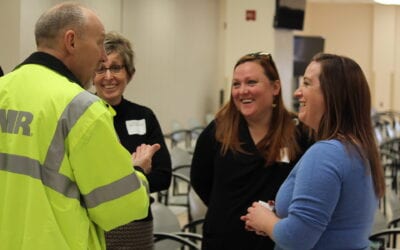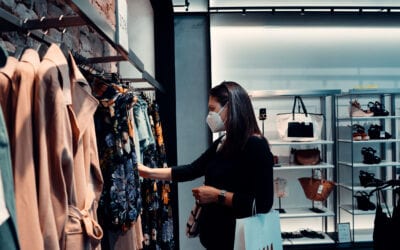Navigating Misinformation Around COVID-19

The internet is a tool to connect with others and stay informed, especially during COVID-19. But that isn’t to say that all information seen on the internet is true. Misinformation about the pandemic has been, and continues to spread across the internet, making it hard to decipher fact from biased opinion. These falsehoods and inaccuracies can have serious consequences – especially in how successful our response is to COVID-19 moving forward.
What Drives Misinformation?
Conspiracy theories. Conspiracy theories are not new, but the internet has allowed people to create and share these theories rapidly. Many of the conspiracy theories put forth about COVID-19 are meant to manipulate consumers’ emotions. Before believing or sharing content out of anger or fear, check the source and do a quick search to help vet if that information is suspicious.
“If it seems like a really detailed and hard-to-follow network of information related to the interests of different parties in spreading COVID-19, you are probably looking at a conspiracy theory,” said Joan Donovan, an expert who studies disinformation campaigns at Harvard University’s Shorenstein Center on Media, Politics, and Public Policy.
Scammers. The pandemic has created the opportunity for scammers to prey upon those who are scared or vulnerable. To avoid scams, you should avoid buying things from vendors you are not familiar with. Scammers may also present themselves as disease investigators to receive sensitive personal information from you such as your social security number and bank information. Callers who ask for this information are not from the health department.
Sharing Information that Aligns with our Biases. In an MIT study, researchers found that participants were 32.4 percent more likely to say they would share the headlines than they were to say those headlines were accurate. This presents a disconnect between accuracy judgements and sharing intentions. Additionally, emotional responses to news about the pandemic drive people to share information that may be false or misleading. People may choose to believe misinformation because it decreases their stress and makes it easier to cope with the present situation.
Consuming All Information from Social Media. Social media encourages rapid browsing of news headlines and sharing of information. Social media also gives rewards to users who post eye-catching news, such as likes and retweets, even if the stories are untrue. Think critically when seeking COVID-19 information from monetized YouTube channels. These channels make money off creating and spreading content they know will resonate with people’s confirmation biases.
Understand that We Don’t Know Everything About COVID-19
One of the challenges about information relating to COVID-19 is that governments and health authorities do not yet have a complete understanding of the virus. This means that guidance and best practices can change with new information.
Trusted Sources
- CDC
- WHO
- National Institutes of Health
- Educational institutions
- Peer reviewed journals
- Non-partisan news outlets
- State and local health departments
Identifying Misinformation
Ask yourself:
- Is this the original account, article, or piece of content?
- Who shared this or created it? -When was this created?
- What account is sharing this? When was the account created? Do they share things from all over the world at all times during the day and night? Could this be a bot?
- Why was this shared?
Ways You Can Reduce the Spread of Misinformation
Acting against misinformation is everyone’s responsibility.
- Be critical when you look at and share information on social media.
- Don’t spread false information on your online networks.
- Report false information to platform administrators.
- When you’re unsure, take the time to verify the shared information.
- Lift up verified COVID-19 information.
Sources
Archives
- November 2025 (2)
- September 2025 (1)
- July 2025 (2)
- June 2025 (3)
- April 2025 (2)
- February 2025 (1)
- January 2025 (2)
- December 2024 (1)
- September 2024 (2)
- August 2024 (2)
- July 2024 (1)
- June 2024 (1)
- February 2024 (1)
- July 2023 (1)
- March 2023 (1)
- October 2022 (1)
- September 2022 (1)
- August 2022 (1)
- July 2022 (2)
- June 2022 (2)
- May 2022 (1)
- April 2022 (4)
- March 2022 (1)
- February 2022 (1)
- January 2022 (2)
- December 2021 (4)
- November 2021 (3)
- September 2021 (2)
- August 2021 (3)
- July 2021 (2)
- June 2021 (1)
- May 2021 (2)
- March 2021 (1)
- December 2020 (6)
- November 2020 (8)
- October 2020 (4)
- September 2020 (7)
- August 2020 (3)
- July 2020 (11)
- May 2020 (2)
- April 2020 (4)
- March 2020 (1)
Categories
- Communicable Disease (5)
- Clinical Services (19)
- Clinical Servcies (1)
- Health Promotions (74)
- Emergency Preparedness (8)





